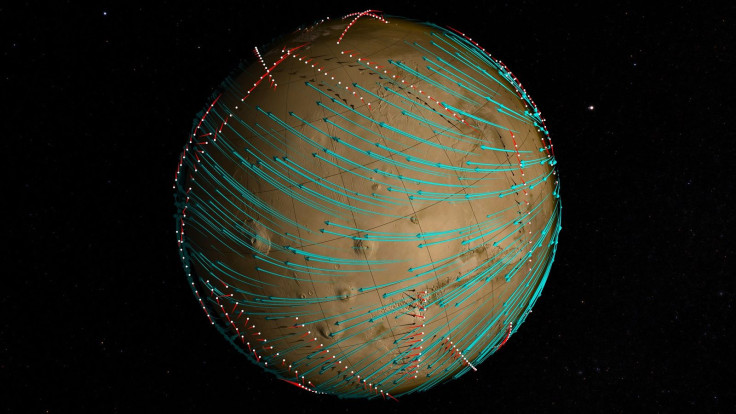First Martian Global Wind Map Reveals Ripple Effects, Contrasting Patterns

KEY POINTS
- Researchers recommended reprograms of NASA's MAVEN spacecraft
- Although hesitant at first, the MAVEN mission team agreed and went with the experiment
- The reprogram helped MAVEN gather data about Martian wind patterns
- The data revealed ripple effects in high altitude as a result of Martian landscape
- It was the first time that researchers were able to map a planet's global wind pattern
Researchers of a new study published in the journal Science describe the wind patterns on Mars for the very first time. The data was gathered thanks to NASA’s Mars Atmosphere and Volatile EvolutioN (MAVEN) project.
MAVEN
It was back in 2016 when a team of researchers proposed a reprogram of the MAVEN spacecraft and its Natural Gas and Ion Mass Spectrometer (NGIMS) instrument to see whether typically stationary parts of the instrument would be able to swing back and forth to gather new data.
Naturally, the mission team was quite reluctant to implement the requested reprograms since the spacecraft had already been successfully gathering vital information about the Martian atmosphere since 2013, and any changes might put the mission at risk. However, the research team argued the reprograms would help MAVEN to gather even more information about the Martian upper atmosphere.
After the spacecraft's manufacturer confirmed that the reprograms might be possible without inflicting any damages, the researchers were able to convince the MAVEN mission team to give their idea a try.
“It's a clever reengineering in flight of how to operate the spacecraft and the instrument,” study co-author Mehdi Benna of the University of Maryland, Baltimore County said. “And by doing both — the spacecraft doing something it was not designed to and the instrument doing something it was not designed to do — we made the wind measurements possible.”
Contrasting Patterns
For the study, researchers used data that was gathered for two days each month from 2016 to 2018.
Overall, the average circulation patterns from season to season were actually quite stable, but shorter-term snapshots at any given time proved to be more variable, in that the winds tend to change faster and more frequently.
The researchers are so far unsure why the patterns are contrasting as such more work is needed to determine why this is so.
Ripples And Waves
MAVEN also detected ripples and waves in the upper atmosphere as a result of changes in the landforms below, such as mountains and canyons. What's interesting is that even if such waves also occur on Earth, the waves on Mars occur at very high altitudes of up to 280 kilometers from the surface.
According to researchers, there are two possible explanations for the phenomenon. First, because the atmosphere on Mars is much thinner than Earth's, it is possible that the waves are able to travel farther without much trouble.
The other possible explanation is that the landforms on Mars are much bigger than Earth's. For instance, Mount Everest is about 9 kilometers tall, while a typical mountain on Mars could be 20 kilometers tall. As such, the massive Martian landforms could cause ripples in higher parts of the atmosphere.
This research is the first to map a planet's global wind pattern, and it is quite interesting that it is not even Earth's.
Moving forward, the team will continue to study the two years' worth of data they already have in order to help us better understand the processes both on Mars and on Earth.
© Copyright IBTimes 2025. All rights reserved.






















